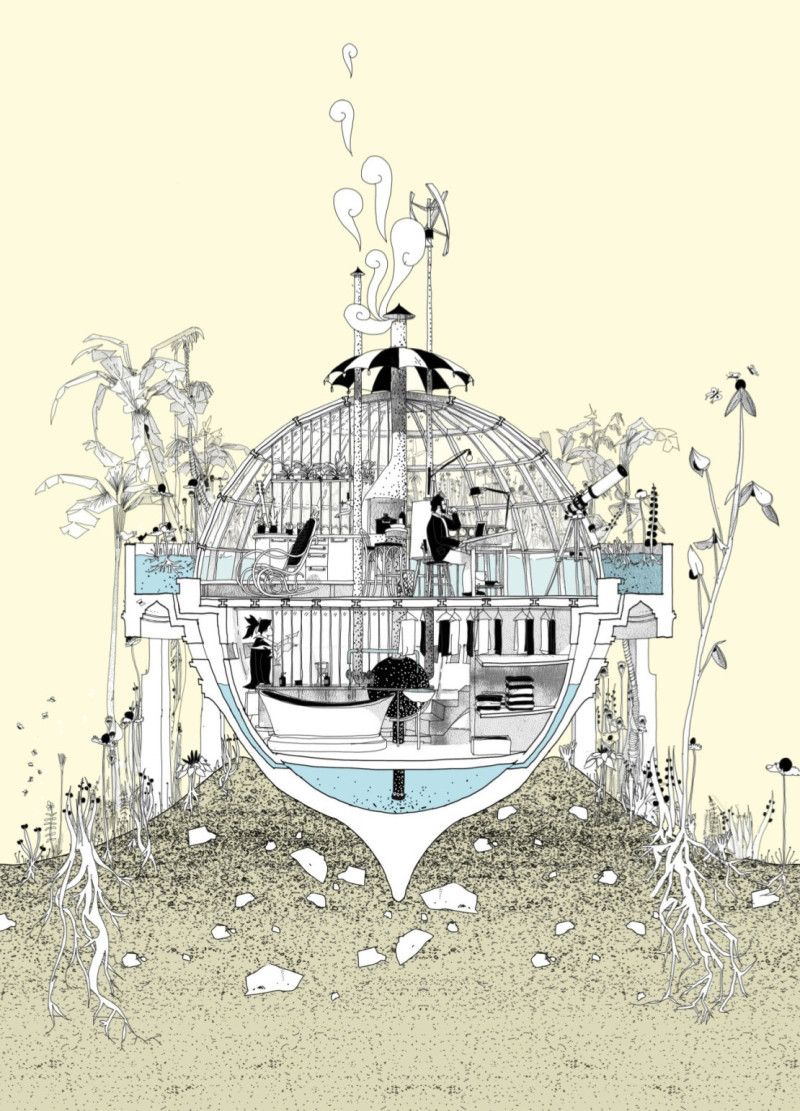5 key facts about this project
The project is characterized by its innovative dome structure, which symbolizes harmony with nature. This design choice is notable for its transparency, allowing ample natural light to permeate the interior while offering occupants unobstructed views of the surrounding area. The dome’s shape is not only aesthetically pleasing but also functional, promoting energy efficiency by facilitating passive solar heating and cooling.
Functionally, the "Biosphere" serves multiple purposes, including residential areas, community spaces, and green zones, each designed with intentionality to promote both privacy and social interaction. The spatial organization encourages residents to engage with each other, fostering a sense of community. The interior zones are divided thoughtfully, allowing for various activities, from quiet contemplation in individual living quarters to interactive gatherings in communal spaces.
Significant design elements include the extensive use of glass in the dome, which creates a connection between indoor and outdoor spaces. This choice reinforces the idea of living in harmony with nature, inviting the surrounding environment into daily life. Complementing this are materials such as sustainably sourced wood and durable steel, which contribute to the overall longevity and structural integrity of the project. Concrete is used in a way that respects its durability while incorporating biophilic design principles.
One of the unique aspects of the "Biosphere" project lies in its integration of vertical farming and green living walls. These features not only enhance the visual appeal of the architecture but also serve practical functions, such as improving air quality and supporting biodiversity. The planned inclusion of water features further emphasizes the role of nature within the living environment, providing soothing sounds and a habitat for various species.
The design philosophy behind the "Biosphere" seeks to instill a greater awareness of ecological footprints, inviting residents to adopt eco-friendly practices naturally integrated into their daily lives. It challenges traditional notions of urban development by proposing that buildings can be more than mere structures; they can be living entities that promote environmental stewardship.
As you explore the presentation of the "Biosphere" project, I encourage you to delve into the architectural plans, sections, and designs that illustrate these innovative concepts. Understanding the architectural ideas behind this project can provide deeper insights into the potential of sustainable architecture in shaping our future built environments.























